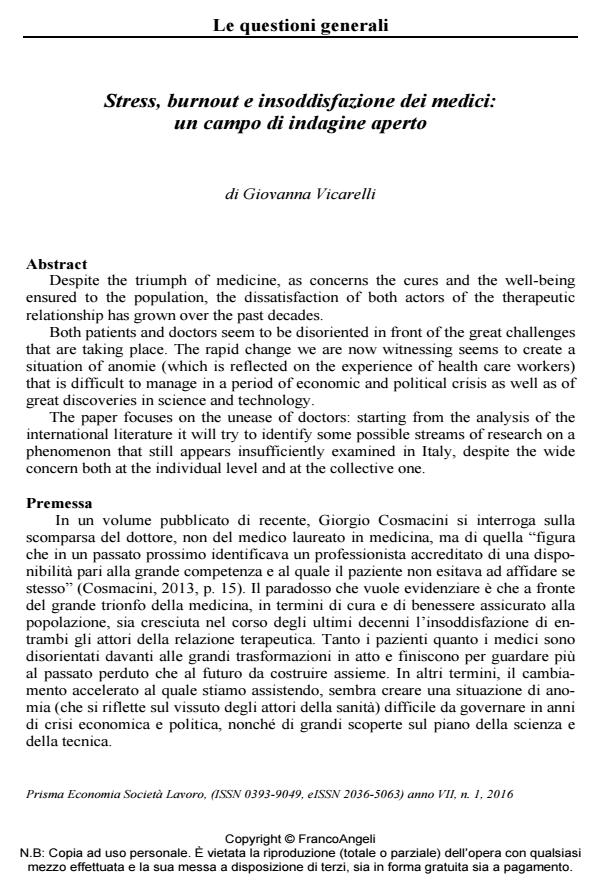Stress, burnout e insoddisfazione dei medici: un campo di indagine aperto
Titolo Rivista PRISMA Economia - Società - Lavoro
Autori/Curatori Giovanna Vicarelli
Anno di pubblicazione 2017 Fascicolo 2016/1
Lingua Italiano Numero pagine 12 P. 9-20 Dimensione file 166 KB
DOI 10.3280/PRI2016-001002
Il DOI è il codice a barre della proprietà intellettuale: per saperne di più
clicca qui
Qui sotto puoi vedere in anteprima la prima pagina di questo articolo.
Se questo articolo ti interessa, lo puoi acquistare (e scaricare in formato pdf) seguendo le facili indicazioni per acquistare il download credit. Acquista Download Credits per scaricare questo Articolo in formato PDF

FrancoAngeli è membro della Publishers International Linking Association, Inc (PILA)associazione indipendente e non profit per facilitare (attraverso i servizi tecnologici implementati da CrossRef.org) l’accesso degli studiosi ai contenuti digitali nelle pubblicazioni professionali e scientifiche
Despite the triumph of medicine, as concerns the cures and the well-being ensured to the population, the dissatisfaction of both actors of the therapeutic relationship has grown over the past decades. Both patients and doctors seem to be disoriented in front of the great challenges that are taking place. The rapid change we are now witnessing seems to create a situation of anomie (which is reflected on the experience of health care workers) that is difficult to manage in a period of economic and political crisis as well as of great discoveries in science and technology. The paper focuses on the unease of doctors: starting from the analysis of the international literature it will try to identify some possible streams of research on a phenomenon that still appears insufficiently examined in Italy, despite the wide concern both at the individual level and at the collective one.
Giovanna Vicarelli, Stress, burnout e insoddisfazione dei medici: un campo di indagine aperto in "PRISMA Economia - Società - Lavoro" 1/2016, pp 9-20, DOI: 10.3280/PRI2016-001002